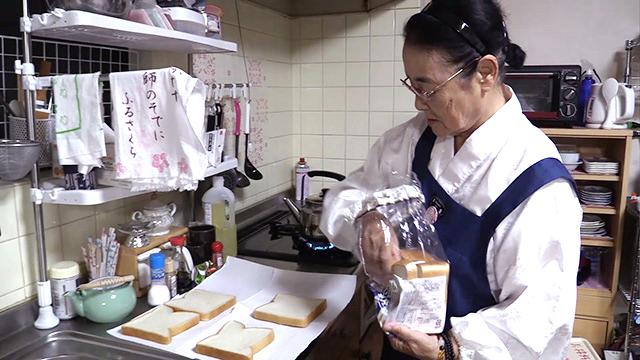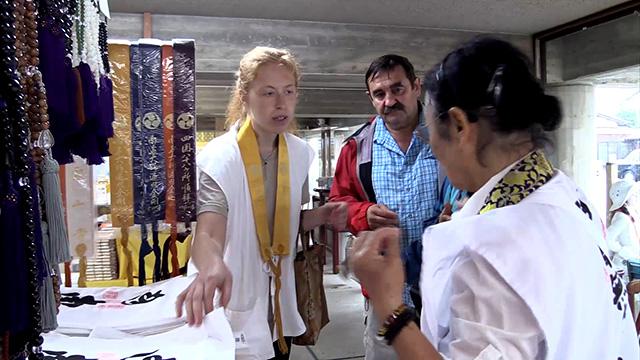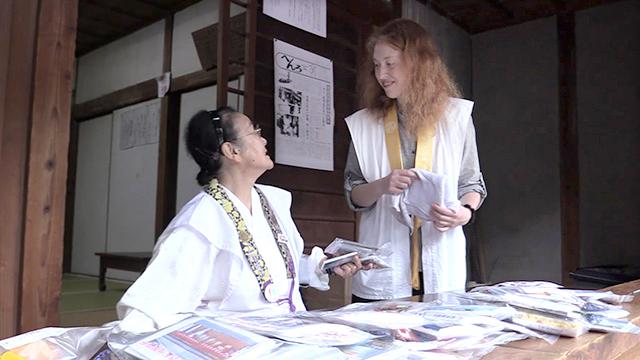
Calling these pilgrims "o-henro-san," or those who walk the path, the locals support their safe journeys by offering meals and places to rest. The custom, called "osettai," is rooted deeply in their daily lives. In recent years, it is impressing visitors from overseas.
This summer, Olivia Kivel from the United States began volunteering at a local inn near Ryozenji Temple in Naruto City, Tokushima Prefecture. The inn is one of several so-called "henro-yado." Kivel went there in hopes of learning about the osettai culture.
This inn is run solely by a nun, named Doryu Takahara, who has completed the pilgrimage route more than 100 times. She offers free breakfast to those who stay at the inn so they won't have to walk on an empty stomach. She also offers help to all pilgrims, regardless of whether they stay at the inn or not. She teaches those from abroad how to put on the unique white pilgrimage robe and offer prayers. Takahara also helps them plan their subsequent lodgings. All of her osettai services are free, and she covers the costs out of the income she earns from her pension.

Kivel says she initially felt a slight sense of incongruity about Takahara's selfless efforts. But Kivel realized something important after watching Takahara see pilgrims off every morning with a smile until they were out of sight and praying for their safety: Understanding and helping others provides the giver with satisfaction and growth.
Kivel says, "If the pilgrims need something to continue the henro, she makes sure they have it and that they are happy. So I think she is showing me how to show warmth towards others and to grow my heart."

Takahara says, "When I consider how to provide osettai to henro pilgrims, I think about my experience and what I can offer. I don't expect anything in return. It's just about kindness."
Many foreign henro travelers find the osettai culture appealing. Some of them drop by at Takahara's inn.
Tokushima University Associate Professor David Moreton, from Canada, is an expert on the pilgrimage route. He says, "It is unfortunate that the custom of selflessly helping and supporting another seems to have disappeared around the world, but when people come they are amazed and thankful that it still exists along the route and are happy to see that people help one another as fellow human beings regardless of background, culture, or race."

Kivel plans to stay at Takaraha's inn to help her out until the end of this month. She hopes to open her own place someday, somewhere in the United States, based on the things she has learned from Takahara's spirit of osettai.

